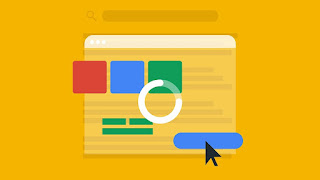Where Ambition Meets Opportunity
Search This Blog
Blog Archive
- September 2025 (2)
- August 2025 (12)
- July 2025 (7)
- June 2025 (16)
- March 2025 (2)
- February 2025 (12)
- January 2025 (3)
About Me
- 5G
- Android
- Apache
- app
- Blockchain
- Camera
- code
- Computer
- Cons
- Crypto
- Cryptocurrency
- Cybersecurity
- Data
- Database
- developer
- DevOps
- ERC1155
- ERC721
- ERC721A
- iPhone
- Laptop
- Machine
- Microphone
- NFT
- Nginx
- Phone
- Printer
- programming
- Pros
- PS5
- Samsung
- Smart Contracts
- Smart TV
- Smart TV
- SSDs
- TV
- Web Server
- website
- Websites
- Wi-Fi
- Windows
Popular Posts
Menu Footer Widget
Monday, February 3, 2025
How to Solve Slow Website Load Times
Website load time is one of the most critical factors affecting the user experience and overall success of a website. A slow-loading website can lead to frustrated visitors, higher bounce rates, and ultimately a loss of potential customers.
In today’s fast-paced digital world, users expect instant access to information, and they are unlikely to wait around for a website that takes too long to load. In fact, a delay of just a few seconds can significantly impact conversion rates, SEO rankings, and user satisfaction.
Fortunately, slow website load times are not a death sentence for your online presence. In this guide, we will explore common causes of slow website load times and offer effective strategies to optimize your website’s performance. These solutions are designed to improve load times while maintaining a seamless user experience and adhering to Google’s AdSense and SEO policies.
1. Analyze Your Website’s Performance
The first step in solving slow website load times is to understand what is causing the issue. There are numerous factors that can contribute to slow loading speeds, from large image sizes to inefficient code. To pinpoint the exact causes, you should start by analyzing your website’s performance.
How to Analyze Performance:
- Use Google PageSpeed Insights: Google’s PageSpeed Insights tool provides a comprehensive overview of your website’s performance on both desktop and mobile devices. It offers specific recommendations for improving load times, such as optimizing images or reducing server response time.
- Pingdom: Pingdom is another popular tool that offers detailed insights into your website’s load speed. It allows you to monitor page load times from different locations around the world, helping you identify specific regions where your website may be performing poorly.
- GTmetrix: GTmetrix combines Google PageSpeed Insights and YSlow scores to give you a full picture of your website’s speed performance. It also provides suggestions for improvement, helping you prioritize optimization efforts.
By analyzing your website’s performance with these tools, you will have a clearer understanding of the issues causing slow load times and can develop a plan for addressing them.
2. Optimize Image Sizes
Large image files are one of the most common culprits behind slow website load times. High-resolution images can take a long time to load, especially on mobile devices or slower internet connections. Optimizing your images can significantly reduce their file size without compromising quality, leading to faster load times.
How to Optimize Images:
- Resize Images: Ensure that images are appropriately sized for their purpose. For example, an image displayed at 400px by 400px should not be uploaded at a resolution of 2000px by 2000px.
- Use the Right File Format: JPEG and WebP are typically the best formats for web images, as they offer good quality with smaller file sizes. PNG is better suited for images with transparency, but it can result in larger file sizes.
- Compress Images: Use image compression tools to reduce the file size of images without sacrificing quality. Tools like TinyPNG, ImageOptim, and Squoosh can help compress your images efficiently.
- Implement Lazy Loading: Lazy loading is a technique that loads images only when they enter the user’s viewport (i.e., when they are about to be viewed). This reduces the number of images that need to be loaded initially, improving the website’s load speed.
3. Minimize HTTP Requests
Every element on a webpage—such as images, scripts, stylesheets, and fonts—requires an HTTP request to load. The more requests your website makes, the slower it will load. Reducing the number of HTTP requests is one of the most effective ways to improve website load times.
How to Minimize HTTP Requests:
- Combine Files: Combine multiple CSS files and JavaScript files into one to reduce the number of requests. This is especially useful for websites with multiple stylesheets or scripts.
- Use CSS Sprites: Instead of using separate images for icons or small graphics, consider combining them into a single image called a CSS sprite. This way, only one HTTP request is needed to load multiple images.
- Use Asynchronous Loading: For JavaScript files that aren’t critical to the initial page load, use asynchronous loading. This ensures that the rest of the page can load without waiting for the JavaScript files to finish loading.
4. Optimize CSS and JavaScript Files
Unoptimized CSS and JavaScript files can add unnecessary weight to your web pages, increasing load times. By minimizing and combining these files, you can significantly improve your website’s performance.
How to Optimize CSS and JavaScript:
- Minify CSS and JavaScript: Minification involves removing unnecessary characters, such as white spaces and comments, from your code. Tools like CSSNano and UglifyJS can automatically minify your CSS and JavaScript files, reducing their file sizes.
- Remove Unused CSS and JavaScript: Over time, websites often accumulate unused or unnecessary CSS and JavaScript. Use tools like PurifyCSS and UnCSS to identify and remove unused code.
- Defer JavaScript: For non-critical JavaScript files, use the “defer” attribute to delay their loading until after the HTML content is loaded. This prevents JavaScript from blocking the rendering of the page.
5. Leverage Browser Caching
Browser caching allows frequently accessed files, such as images, CSS, and JavaScript, to be stored locally on a user’s device. This way, the browser doesn’t have to download the same files every time the user visits your website, improving load times for returning visitors.
How to Implement Browser Caching:
- Set Expiration Dates: Use caching rules to set expiration dates for different file types. For example, images may not need to be updated frequently, so you can set a longer expiration time for them. For resources that change often, such as HTML files, you can set shorter expiration times.
- Leverage HTTP Headers: Configure HTTP headers such as “Cache-Control” and “Expires” to instruct the browser to store certain resources in its cache for a specified period.
6. Use Content Delivery Networks (CDNs)
A Content Delivery Network (CDN) is a network of servers distributed across various locations globally. CDNs store copies of your website’s static content (such as images, stylesheets, and scripts) on these servers, which are strategically placed closer to the user’s geographical location. This reduces the time it takes for users to load your website’s content, resulting in faster load times.
How to Use a CDN:
- Choose a Reliable CDN Provider: Popular CDN providers include Cloudflare, AWS CloudFront, and KeyCDN. Select one that fits your website’s needs in terms of performance, cost, and geographical reach.
- Configure Your CDN: After signing up for a CDN service, configure it to cache and serve your website’s static assets. Most CDN providers offer easy-to-follow guides and plugins for easy integration with your website.
7. Optimize Your Web Hosting
The performance of your web hosting service plays a significant role in website load times. If your hosting server is slow or unreliable, your website’s performance will suffer. Choosing the right hosting solution is critical to ensuring optimal load times.
How to Optimize Web Hosting:
- Choose a Reliable Hosting Provider: Research different hosting providers and choose one known for performance and reliability. Look for hosting providers that offer fast SSD storage, optimized server configurations, and high uptime guarantees.
- Consider Managed Hosting: For WordPress or other content management systems (CMS), consider managed hosting. Managed hosting services handle performance optimization, security, and regular updates, which can improve load times and reduce technical headaches.
- Upgrade to a Higher-Tier Hosting Plan: If you’re on a shared hosting plan, consider upgrading to a Virtual Private Server (VPS) or dedicated server. These options offer more resources and better performance than shared hosting, especially for high-traffic websites.
8. Reduce Server Response Time
Server response time is the amount of time it takes for your server to respond to a request from the user’s browser. A slow server response time can be caused by various factors, such as an overloaded server, inefficient server configuration, or lack of proper optimization.
How to Reduce Server Response Time:
- Use Fast and Efficient Software: Choose fast, lightweight software stacks (e.g., Nginx instead of Apache) and configure them to optimize performance.
- Upgrade Your Hosting Plan: If you’re experiencing slow response times due to high traffic or resource limitations, upgrading your hosting plan to a more powerful solution can improve server response time.
- Optimize Databases: Regularly clean and optimize your website’s database to ensure faster query responses. This can include removing unused data, optimizing indexes, and using database caching.
9. Regularly Test and Monitor Your Website
Once you’ve implemented optimizations to improve website load times, it’s important to regularly test and monitor your website’s performance. This ensures that your optimizations remain effective and that any new issues are promptly addressed.
How to Monitor Website Performance:
- Set Up Monitoring Tools: Use website performance monitoring tools like Google Analytics, Pingdom, or GTmetrix to track load times and identify performance bottlenecks.
- Perform Regular Speed Tests: Test your website’s speed periodically to ensure that it’s performing optimally. This will also help you track the impact of any changes you make.


Thanks for reading How to Solve Slow Website Load Times
« Prev Post
Next Post »





No comments:
Post a Comment